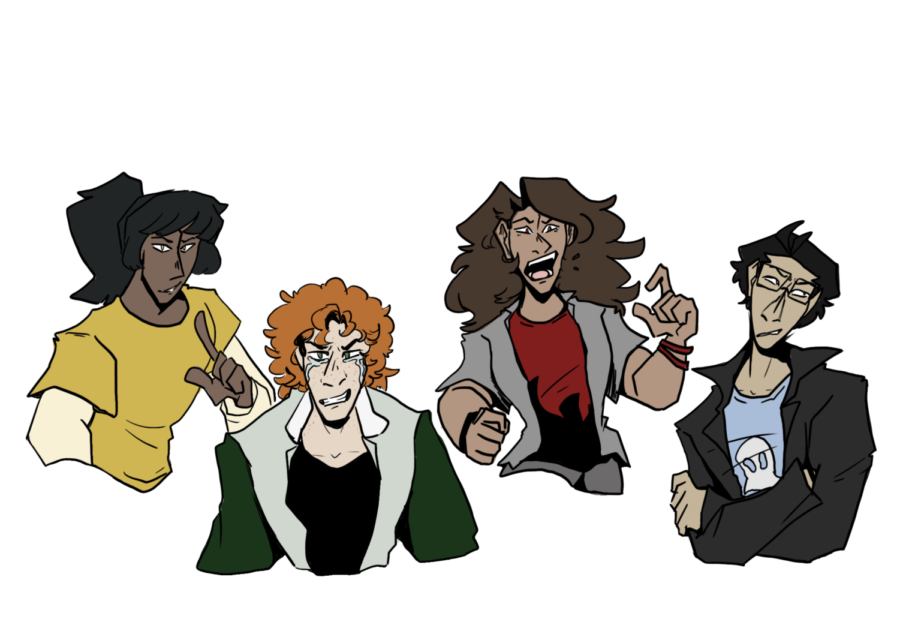Agree to disagree
photo by Emily Patterson
Disputes between opposing sides lead to chaotic arguments. Illustration depicts different forms of expressing anger.
Whenever politics are concerned, from national elections to the dinner table, a strong division exists between beliefs, and we have lost the ability to talk about it. If someone has a belief you do not agree with, you cannot associate with them or even look them in the eye. The reason as to why most civil discussion turns into messy arguing is because school never taught students how to disagree. Most controversial topics are avoided, and instead pre-established ideas are introduced. Since people are young they are taught to think, believe and conclude in a specific manner so once they go out in real life and realize not everyone thinks the same, things get chaotic. People don’t know how to work or even tolerate someone who doesn’t think like them.
The recent controversy between Joe Rogan, Neil Young and Spotify is a perfect example. Music artist Neil Young demanded Spotify remove his music or remove Joe Rogan’s podcasts because Young felt many of Rogan’s podcasts violated misinformation guidelines. This conflict escalates from nonexistent to blow-up-your-enemies in the course of one Tweet. Out of the thousands of people that participated in relentless online slander, how many had actually listened to Joe Rogan’s podcast and decided for themselves?
Opposing sides do not necessarily have to adhere to two polar extremes. We need to learn to discuss the things that make us angry, and schools need to help. There’s many ways to teach students how to disagree. Start by bringing up open discussions on topics without a concrete view. Bringing back books that are banned by counties due to sensitive topics, continue talking about mental health, abortion, racial injustice and historical events. And keeping one thing in mind: people won’t listen if they don’t perceive they’ll be heard or acknowledged back.
People need to accept that someone will always have a distinct view or perspective, but that doesn’t take away from their ability to do tasks. That’s also why diversity is so important when teaching, there’s always different ways to view the world and the issues that surround it. Being able to resolve conflict and in exchange get something that benefits both sides. Two things will be gained from proper discussions and disagreements, either a compromise will be reached or a new perspective will be seen.
It doesn’t matter who is right and who is wrong, what matters is being able to tolerate each other and ultimately to be able to resolve conflicts. In real life everyone will always encounter someone who they need to work with that may have completely different views. People shouldn’t let that affect them or their work, nor should it create an unnecessary dispute. The only thing people need to do is accept that both opinions won’t change and that they should be allowed to disagree without making an all or nothing proposal.
Your donation will support the student journalists of Hagerty High School. We are an ad-free publication, and your contribution helps us publish six issues of the BluePrint and cover our annual website hosting costs. Thank you so much!


